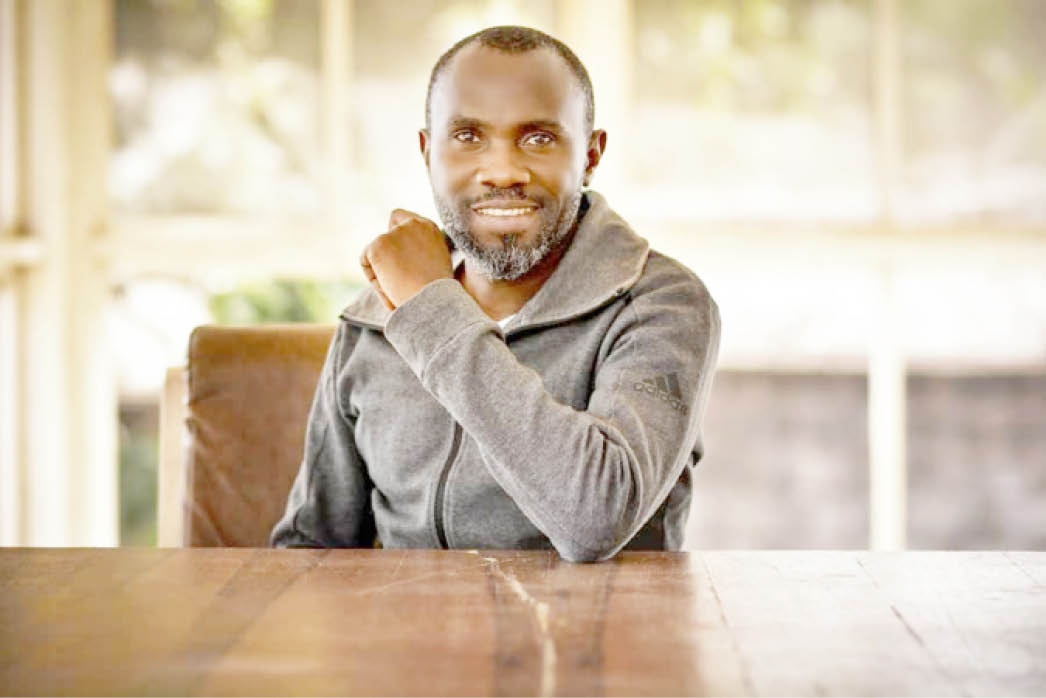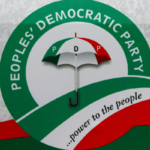Harrison Idahosa is a visual artist with over 23 years of experience. In this Interview with Daily Trust on Sunday, Idahosa shares his experience and journey to redefining himself as an artist.
How have your artistic journey and the influence of your cultural background or personal experiences shaped your current artistic style?
My name is Harrison Idahosa, I hail from Edo State, but was born in Jos, Plateau State of Nigeria. Although, I didn’t have the opportunity of formerly learning art in primary and secondary schools, I was admitted to study creative arts at the University of Maiduguri because I had a rich and very impressive portfolio. I went on to graduate as the best student in my class with a first-class degree. I also have an MFA degree in painting from the Ahmadu Bello University Zaria, but I owe most of my artistic development to my childhood.
Growing up as a child in Nigeria in the late 1970s and 1980s was quite an adventure. Children would often engage in creative challenges during play time; from the construction of different play objects, to drawing of comic characters and then to exploring the wild with rubber slings and traps for rodents created by the collective efforts of these children. Television time was very limited and often restricted. Creative activities such as drawing (whether it was on the ground outside or on walls or paper) and the making of paper and tin-can toys helped hone my creative and artistic skills. There were a couple of other children within our neighbourhood in Benin City who were equally gifted in the arts and because each one wanted to outdo the other, we constantly strove to perfection. The sculptural pieces (statues of historic figures) situated at major roundabouts and junctions within the city were always a delight to behold, we would often look forward to the unveiling of new statues because they were always a source of inspiration for us as children.
In 2001, I began to delve into thematic studies in order to develop richer and deeper works that could address key societal issues. As an artist, I invest a lot of faith in the use of symbolic referents derived from personal experiences, and believe it is imperative for art to assume a more responsive role in every sphere of modern life. I am an ardent advocate for the pursuit of technical mastery and for developing an authentic artistic voice that could inspire younger artists as well as presenting others with the opportunity of having a fresh view point, deepening their experience of the visual world and enhance their enjoyment of art.

Recently, I reached a point of dissatisfaction with merely representing my subjects in realism, so I began to explore a synthesis of abstraction and realism in painting, hence, one could describe my current painting style as fitting into the genre of abstract realism.
How do you decide on the themes or subjects for your artworks?
The themes of my paintings are usually drawn from a wide range of concerns, national, societal, environmental or personal interest. Depending on the burden in my heart, I am motivated to create a theme.
Can you share an instance when you faced a creative block? How did you overcome it?
When I was studying for my MFA, I had difficulty deciding on what to explore, hence I wasn’t motivated to paint except when I had a commission. I overcame that creative block by praying, reminiscing on my childhood and playing my guitar, I love to play and improvise on jazz pieces.
What mediums do you enjoy working with the most and why?
At deferent times in my life, I explored different media and techniques and I am quite proficient in all of them, but I think I stuck longer with oil on canvas because of the flexibility it offers, although these days I walk more with a combination of acrylic, oil, ink, pastel and charcoal due to the spontaneity and blend of my current expressions.
How does your creative process unfold from conception to completion?
I usually begin my study exploring different compositions with simple line drawings (sketches), then, I enhance the composition digitally through the use of photoshop and then I begin the application of pigment on a prepared ground (mainly canvas). On some occasions, I prefer to be spontaneous and sporadic.
Could you highlight an artwork that holds a special place in your heart? What’s the story behind it?
I think that would be ‘I see Africa’. It was painted in 2001. ‘I see Africa’ is an impactful and thought-provoking imaginary landscape painting. This artwork captures a visual representation of the challenges faced by the African continent, emphasising the fragile environment and the need for sustainable peace. The focal point of the painting is the map of Africa carved out by a desiccated, cracked earth, symbolising the harsh realities that Africa endures as a result of colonization, exploitation, and conflict. At the centre of Africa lies a green leaf with a droplet of water, seemingly untouched by the harsh environment, which symbolises hope and renewal. The inclusion of the leaf as the centrepiece of the painting is a call for self-reflection, urging Africans to recognise and appreciate their rich cultural heritage and history. The drop of water delicately resting on the leaf accentuates the importance of sustenance and nurturing for the growth of a peaceful and united Africa. Adjacent to Africa, on the left side of the painting, is a tree stub, and beyond it is a large leafless tree, as well as smaller leafless trees at the distant horizon, serving as a poignant reminder of the impact of western imperialism, neocolonialism and colonialism, which continues to exploit the continent and induce standards that are detrimental to the prosperity and peaceful coexistence of African communities.
I also drew attention to the impact of the incessant conflicts within the continent with displaced bones, weapons and broken earthenware. A distant hill at the right side of the painting symbolizes ruined elements of the continent’s history. I highlighted the need for healing, unity, and resilience with embossed representation of rocks at the foreground.
How do you balance maintaining your signature style while also experimenting with new techniques?
I guess my signature is innate. No matter what subject or style I am exploring, you are always going to see something about me if you are conversant with my works and know how to identify authenticity in artworks.
What emotions or messages do you intend to convey through your art?
Mixed emotions, but empathy would be top on the list.
Are there artists, past or present, who have significantly influenced your works?
Yes! so many artists, but to mention a few; Sir Victor Uwaifo, Leonardo de Vinci, Norman Rockwell, William M. Tuner, Dale Terbush, Pino, Voka and Ibe Ananaba.
What’s the relationship between your art and the broader societal or cultural context?
Visual art is one of the ways through which my voice is heard and my heart beat felt. In the context of Nigeria’s rich cultural landscape, I aspire to have my work reflect the beauty, complexities, and challenges of our world. By blending the tangible and the emotional, I think my art serves as a catalyst for change, aiming to provoke thought, inspire dialogue, and ignite action in the face of urgent global issues.
How do you navigate the challenges of translating thoughts and emotions into visual form?
Navigating the challenge of translating thoughts and emotions into art forms is both a journey of introspection and technical exploration. To capture the intangible, I delve deep into the core of what I want to convey, whether it’s a societal concern or a personal emotion. This introspection informs my choice of colours, compositions, and techniques. My fusion of abstraction and realism allows me to bridge the gap between the concrete and the abstract, enabling me to convey both the essence of the emotion and the tangible elements that evoke it. Through this interplay, I strive to create art that resonates universally, inviting viewers to connect on a visceral level and find their own meanings within the layers of my work.
How do you handle critiques and feedback on your work, both positive and negative?
Critique and feedback, whether positive or negative, are invaluable tools in my artistic journey. Positive feedback provides affirmation that my work resonates with others, motivating me to continue pushing my creative boundaries. Negative feedback, however, is equally important. I approach it with an open mind and a willingness to learn. Constructive criticism helps me refine my techniques and concepts, encouraging growth. By embracing both types of feedback, I nurture a balanced perspective that fuels my artistic evolution and ensures that my work continues to engage and inspire.
Can you share a sneak peek into any upcoming projects or themes you’re excited to explore?
Recently, my artistic exploration has been captivated by the possibilities of Digital Art and Augmented Reality. I’m excited to share a glimpse of my upcoming project, where I plan to fuse these technologies to convey powerful messages of peace, social justice, and sustainability. Through interactive experiences, viewers will step into immersive worlds where they can engage with the themes on a deeper level. I’m particularly excited and looking forward to creating augmented reality installations that allow people to interact with elements representing positive change and spark conversations about pressing global issues.

 Join Daily Trust WhatsApp Community For Quick Access To News and Happenings Around You.
Join Daily Trust WhatsApp Community For Quick Access To News and Happenings Around You.


